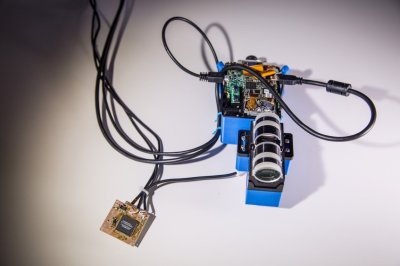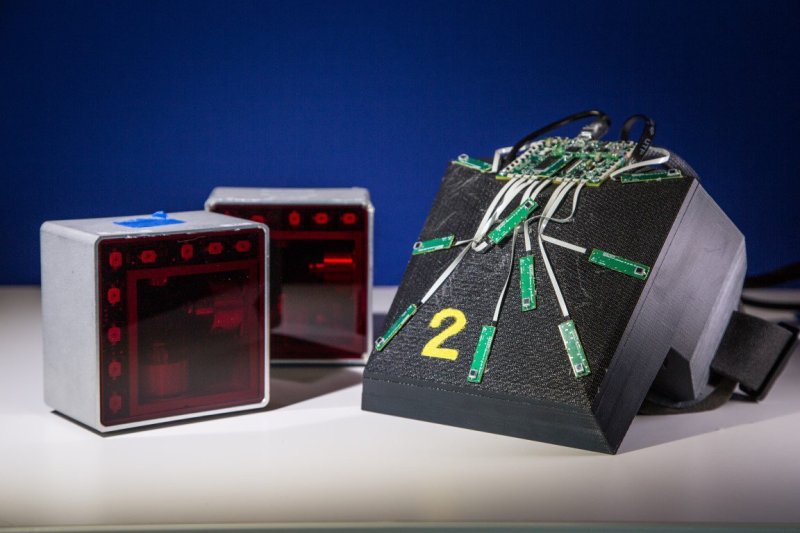Just in case anyone secretly had the idea that Valve Software’s VR and other hardware somehow sprang fully-formed from a lab, here are some great photos and video of early prototypes, and interviews with the people who made them. Some of the hardware is quite raw-looking, some of it is recognizable, and some are from directions that were explored but went nowhere, but it’s all fascinating.

The accompanying video (embedded below) has some great background and stories about the research process, which began with a mandate to explore the concepts of AR and VR and determine what could be done and what was holding things back.
One good peek into this process is the piece of hardware shown to the left. You look into the lens end like a little telescope. It has a projector that beams an image directly into your eye, and it has camera-based tracking that updates that image extremely quickly.
The result is a device that lets you look through a little window into a completely different world. In the video (2:16) one of the developers says “It really taught us just how important tracking was. No matter [how you moved] it was essentially perfect. It was really the first glimpse we had into what could be achieved if you had very low persistence displays, and very good tracking.” That set the direction for the research that followed.
This research ultimately led Valve in the direction of room-scale VR in a partnership with HTC using the Vive and a tracking system called Lighthouse, details of which we have covered in the past.
There were also indirect results from all the research. The castAR was a concept originally touched on in Valve’s hardware lab. It wasn’t a direction Valve ultimately chose to go, but two developers – Jeri Ellsworth and Rick Johnson – formed their own company to follow it up.
















awesome and inspiring.
They should just hire more people so they can actually ship stuff, instead of endlessly tinkering. Even at their rate they have produced more quality output than most software dev. companies ever will in 2 lifetimes.
Makes me want to work at valve even more :D
Great attitude: enable, even encourage people to hack, reverse engineer the stuff they bought to explore new things. This mindset works not only for hardware, but also for software. The Vive with their lighthouse tech rocks.
Firmware and lighthouse is open because it’s so simple, FPGAs are locked down. I don’t consider a removable head strap or a USB port that only supplies power “designed to be hacked”.
Shame CastAR is not going as fast as it should the demo and concept is great
They are captured by venture capitalists it looks like : / They had a working design and product they could have shipped but cancelled/refunded the kickstarter instead to continue iterating on their design.
Jeri talked about this on the last episode of embedded.fm – they realised ( in good time for a change) that trying to do it on a PC platform was simply a bad idea for all sorts of reasons. They’re now doing a dedicated platform with all sorts of very neat tricks over & above what’s been shown already.
This is pure bullshit,
CastAR has been taken over by VC, they are in this weird startup place right now where they are worth a LOT of hypothetical money as long as they not release anything, because there is nothing short of miracle product that would sustain valley valuation.
Kathy Bates really let himself go.
Would be nice if they explained how it worked.
anyone scan the QR on the board?
never mind, got to the part in the video that explains them.
Did you notice that one of his creations has a 2pole knife switch?
I must be misinterpreting the image. That can’t be an actual knife switch… can it?
Starts at about 4:40 in the video.
Half-Life 3 confirmed?
Truly awesome video.
What a dream project! Super cool to find out they put a USB port inside the heaset, and actually want people to hack it. Head shaker?